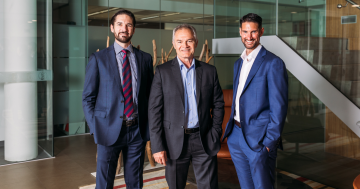Abdullah Almaatouq & Duncan Watts discuss how to divvy up work to help teams be their most productive.
 Are two heads better than one? Or do too many cooks spoil the broth? These are important questions for managers whose decisions about assigning work could impact productivity—and the bottom line.
Are two heads better than one? Or do too many cooks spoil the broth? These are important questions for managers whose decisions about assigning work could impact productivity—and the bottom line.
Over the past century, researchers have come up with conflicting findings.
The only real consensus is that the answer depends on the conditions of the work.
But what are those conditions?
To try to shed light on this question, we conducted a large-scale experiment using the virtual lab platform, Empirica, to test our hypothesis that the answer depends on characteristics of the task.
More specifically, we looked at the complexity of a task, meaning the number of components in a task and the nature of the interdependencies between them.
For example, we have a sense that assembling a car is more complex than restocking the aisles in a supermarket.
But we do not have a way to measure the complexity of each task.
We simply know that one is harder than the other.
And when we compare building a car to writing a novel, it gets even more complicated.
How can we measure and compare the complexity of those tasks?
The costs and benefits of being part of a team
While we don’t yet have precise language to precisely describe tasks, we do have computational tasks commonly studied in the fields of computer science and artificial intelligence.
In those tasks, the complexity is relatively well understood and defined (i.e., complexity can be quantified in terms of the run time required by an algorithm to solve the problem).
It also can be translated into human complexity of solving the same tasks.
In our study, we assigned people tasks and varied the complexity in objective and measurable ways to see how individuals performed compared to teams.
We found that teams are as fast as the fastest individual and more efficient than the most efficient individual when the task is complex—but not when the task is simple.
In other words, teams are more efficient when it comes to complex tasks, but individuals are more efficient at simple tasks.
Our explanation for this finding compares the costs and benefits associated with being part of a team.
For example, one cost of being on a team is that members must spend time talking with each other.
Another is social loafing, where some members put less effort into the task because they know other members will step up.
There also may be a herd mentality, which precludes the team from exploring all possible options.
In contrast, a benefit of being part of a team is that team members can do parallel processing to work on different parts of a problem by dividing and conquering.
Another is that they can bring different perspectives to a problem and help each other think outside of the box.
In our study, we found that the cost of being on a team is fixed.
The cost doesn’t change even when the complexity increases or decreases.
However, the benefits are not fixed.
The benefits clearly increase as the complexity of the task increases.
The figure below illustrates the absolute difference in terms of average time spent between interacting groups and an average individual on different problem-solving activities.
The takeaway for managers
The bottom line is that for simple tasks, the cost of teamwork exceeds the benefit, whereas for complex tasks the benefits of teamwork surpass the costs, leading to greater efficiency.
As for the question of whether two heads are better than one, the answer, in part, depends on the complexity of the task and how performance is evaluated.
If managers want to find a workable solution to a problem in the least amount of time, they should ask a group to solve the problem when it is complex.
And they should ask an individual to solve the problem when it is simple.
While we don’t yet know how to advise managers on what tasks are “complex,” we do know that complexity makes a big difference.
Ultimately it falls to managers to determine the complexity of specific tasks—they’re better positioned to do that than we could be.
What we can tell them is that evaluating the complexity of tasks systematically and more rigorously can help them allocate resources more effectively.
Assistant professor *Abdullah Almaatouq of the MIT Sloan School of Management and professor Duncan Watts of the University of Pennsylvania are the co-authors of “Task complexity moderates group synergy.”
This article first appeared at qz.com.











